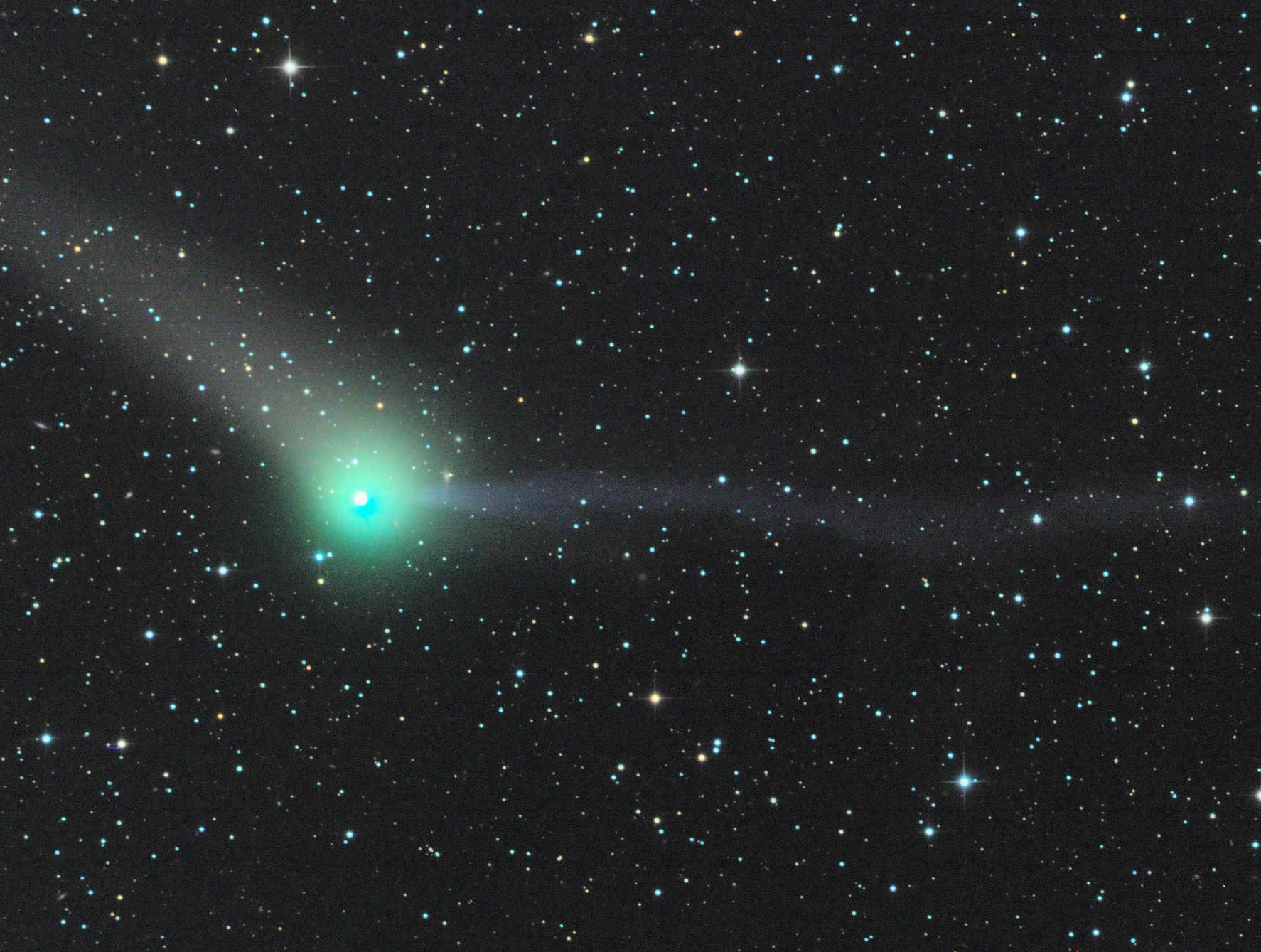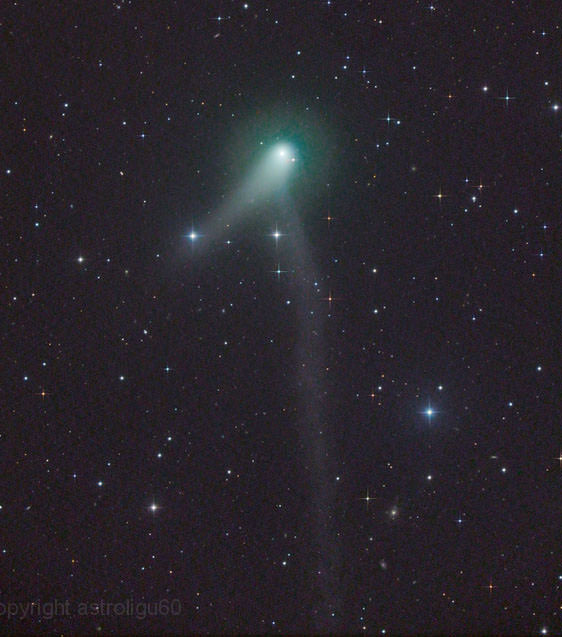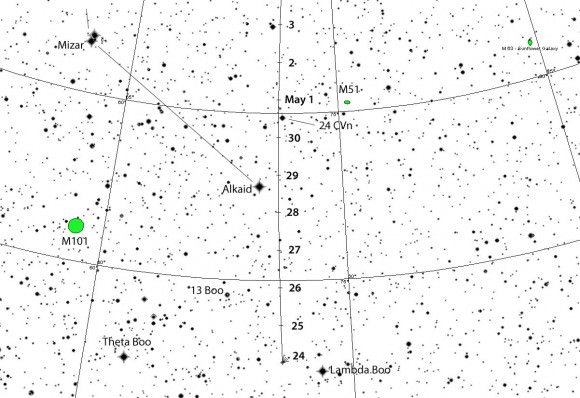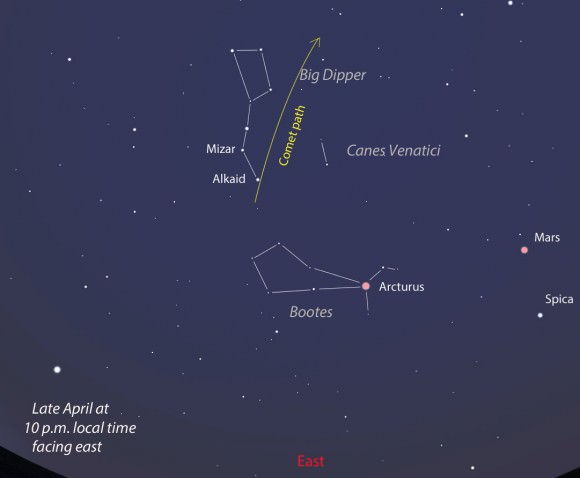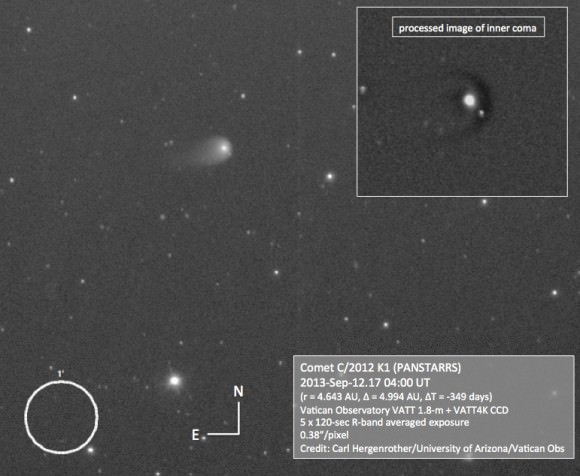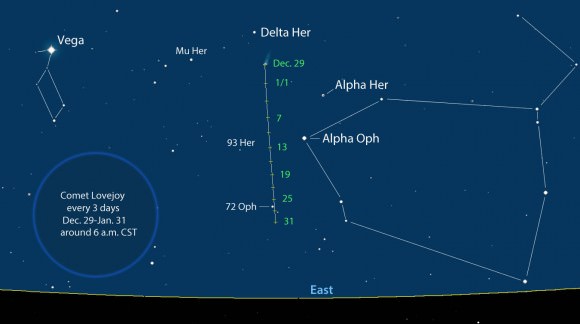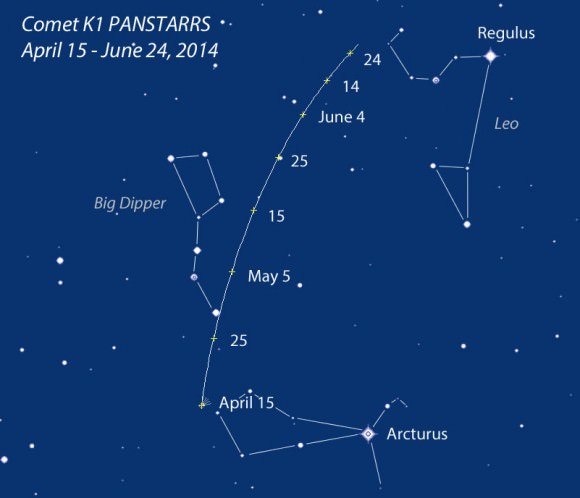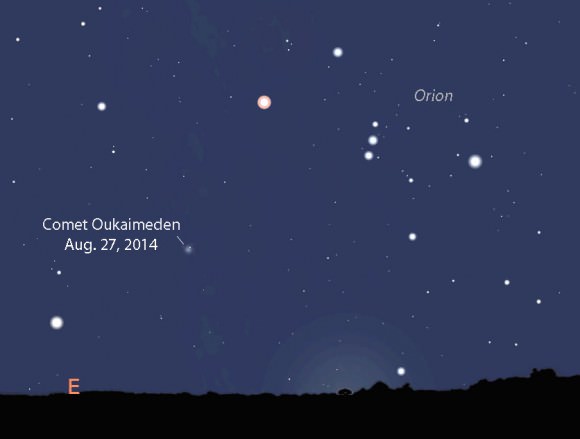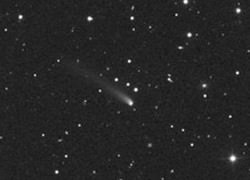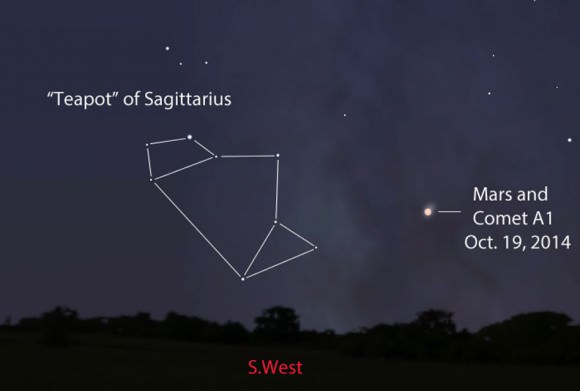Thank you K1 PanSTARRS for hanging in there! Some comets crumble and fade away. Others linger a few months and move on. But after looping across the night sky for more than a year, this one is nowhere near quitting. Matter of fact, the best is yet to come.
This new visitor from the Oort Cloud making its first passage through the inner solar system, C/2012 K1 was discovered in May 2012 by the Pan-STARRS 1 survey telescope atop Mt. Haleakala in Hawaii at magnitude 19.7. Faint! On its the inbound journey from the Oort Cloud, C/2012 K1 approached with an orbit estimated in the millions of years. Perturbed by its interactions with the planets, its new orbit has been reduced to a mere ~400,000 years. That makes the many observing opportunities PanSTARRS K1 has provided that much more appreciated. No one alive now will ever see the comet again once this performance is over.
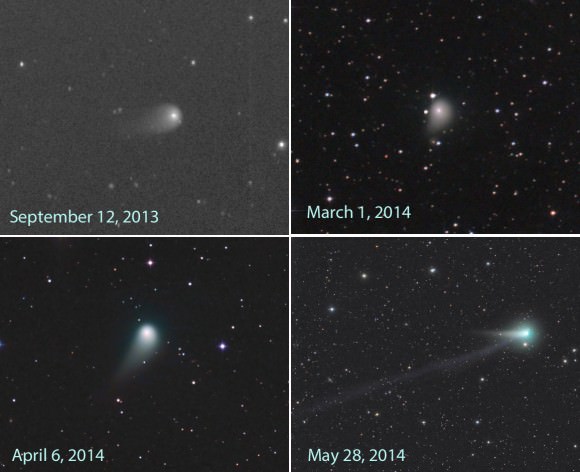
Many amateur astronomers first picked up the comet’s trail in the spring of 2013 when it had brightened to around magnitude 13.5. My observing notes from June 2, 2013, read:
“Very small, about 20 arc seconds in diameter. Pretty faint at ~13.5 and moderately condensed but not too difficult at 142x . Well placed in Hercules.” Let’s just say it was a faint, fuzzy blob.
K1 PanSTARRS slowly brightened in Serpens last fall until it was lost in evening twilight. Come January this year it returned to the morning sky a little closer to Earth and Sun and a magnitude brighter. As winter snow gave way to frogs and flowers, the comet rocketed across Corona Borealis, Bootes and Ursa Major. Its fat, well-condensed coma towed a pair of tails and grew bright enough to spot in binoculars at magnitude 8.5 in late May.
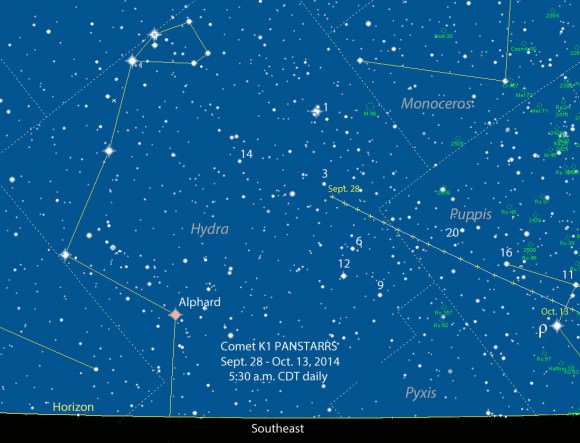
By July, it hid away in the solar glare a second time only to come back swinging in September’s pre-dawn sky. Now in the constellation Hydra and even closer to Earth, C/2012 K1 has further brightened to magnitude 7.5. Though low in the southeast at dawn, I was pleasantly surprised to see it several mornings ago. Through my 15-inch (37-cm) reflector at 64x I saw a fluffy, bright coma punctuated by a brighter, not-quite-stellar nucleus and a faint tail extending 1/4º to the northeast.
Mid-northern observers can watch the comet’s antics through mid-October. From then on, K1 will only be accessible from the far southern U.S. and points south as it makes the rounds of Pictor, Dorado and Horologium. After all this time you might think the comet is ready to depart Earth’s vicinity. Not even. C/2012 K1 will finally make its closest approach to our planet on Halloween (88.6 million miles – 143 million km) when it could easily shine at magnitude 6.5, making it very nearly a naked-eye comet.
PanSTARRS K1’s not giving up anytime soon. Southern skywatchers will keep it in view through the spring of 2015 before it returns to the deep chill from whence it came. After delighting skywatchers for nearly two years, it’ll be hard to let this one go.

